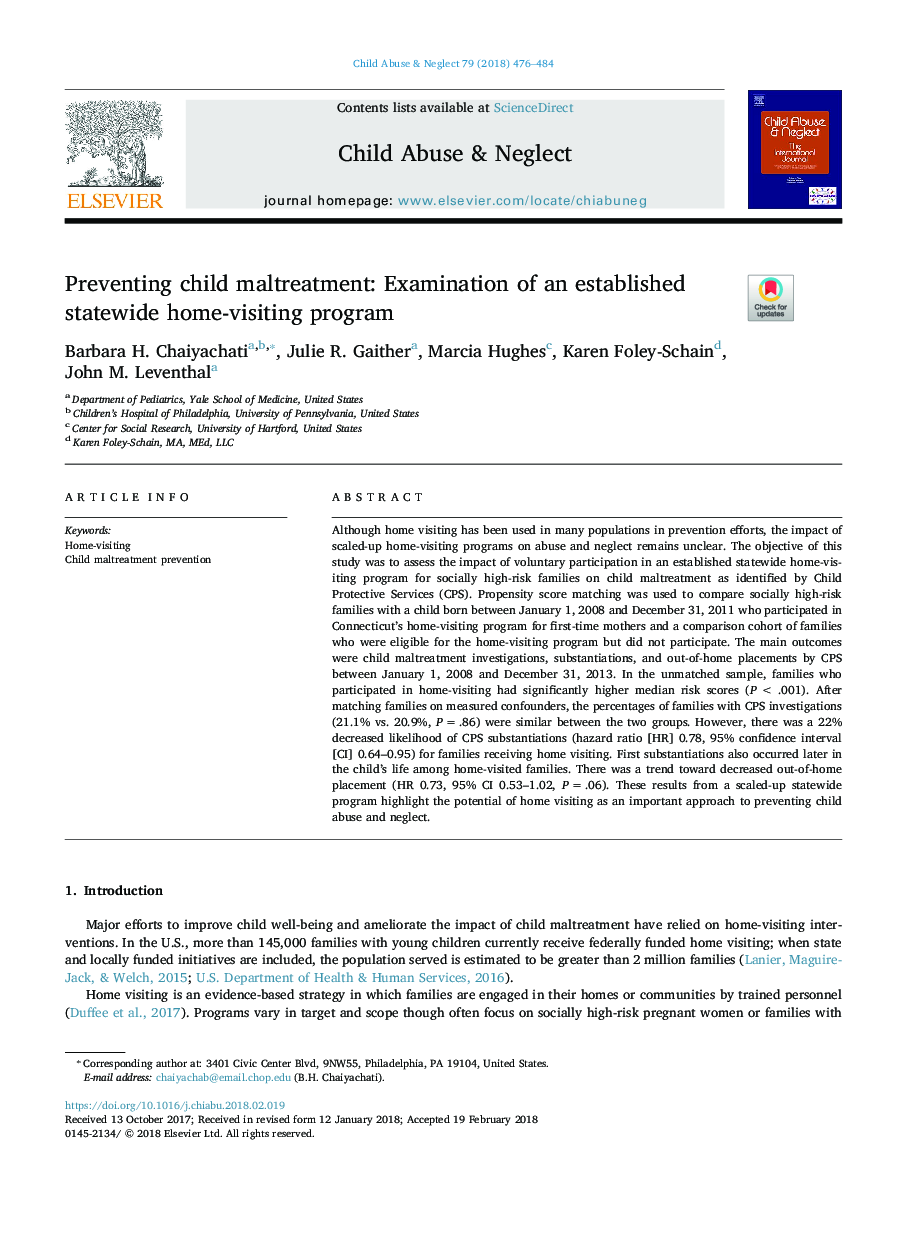| Article ID | Journal | Published Year | Pages | File Type |
|---|---|---|---|---|
| 6832056 | Child Abuse & Neglect | 2018 | 9 Pages |
Abstract
Although home visiting has been used in many populations in prevention efforts, the impact of scaled-up home-visiting programs on abuse and neglect remains unclear. The objective of this study was to assess the impact of voluntary participation in an established statewide home-visiting program for socially high-risk families on child maltreatment as identified by Child Protective Services (CPS). Propensity score matching was used to compare socially high-risk families with a child born between January 1, 2008 and December 31, 2011 who participated in Connecticut's home-visiting program for first-time mothers and a comparison cohort of families who were eligible for the home-visiting program but did not participate. The main outcomes were child maltreatment investigations, substantiations, and out-of-home placements by CPS between January 1, 2008 and December 31, 2013. In the unmatched sample, families who participated in home-visiting had significantly higher median risk scores (Pâ¯<â¯.001). After matching families on measured confounders, the percentages of families with CPS investigations (21.1% vs. 20.9%, Pâ¯=â¯.86) were similar between the two groups. However, there was a 22% decreased likelihood of CPS substantiations (hazard ratio [HR] 0.78, 95% confidence interval [CI] 0.64-0.95) for families receiving home visiting. First substantiations also occurred later in the child's life among home-visited families. There was a trend toward decreased out-of-home placement (HR 0.73, 95% CI 0.53-1.02, Pâ¯=â¯.06). These results from a scaled-up statewide program highlight the potential of home visiting as an important approach to preventing child abuse and neglect.
Keywords
Related Topics
Health Sciences
Medicine and Dentistry
Perinatology, Pediatrics and Child Health
Authors
Barbara H. Chaiyachati, Julie R. Gaither, Marcia Hughes, Karen Foley-Schain, John M. Leventhal,
